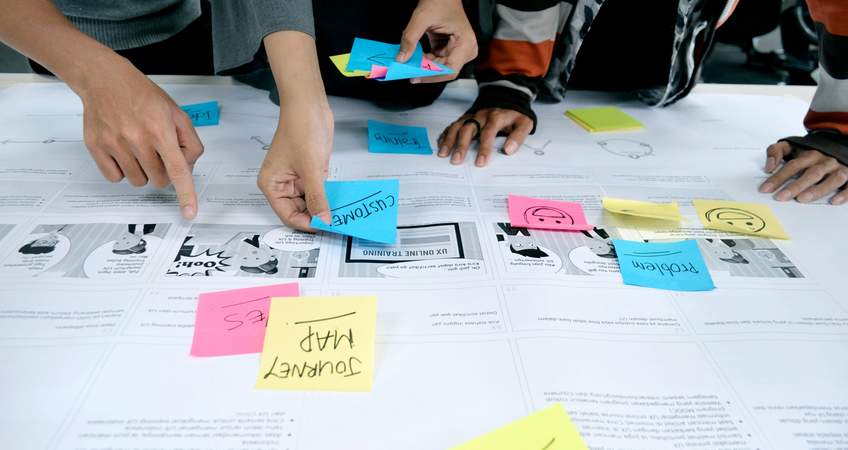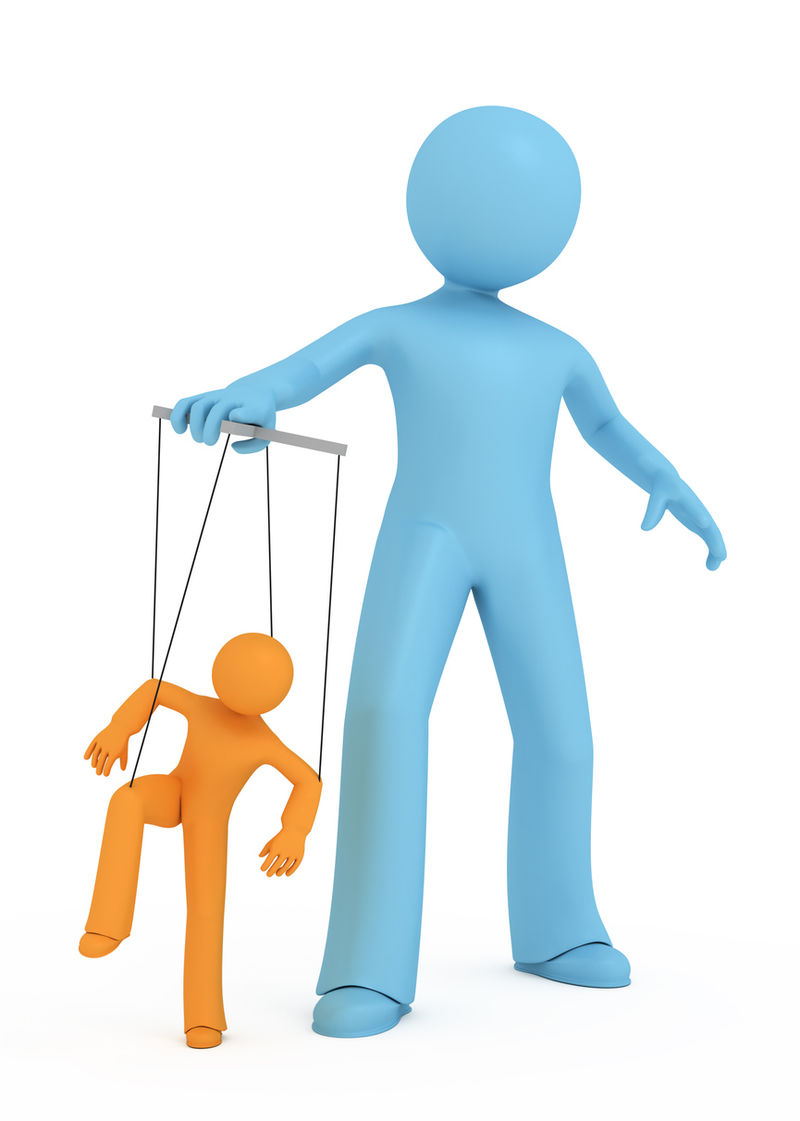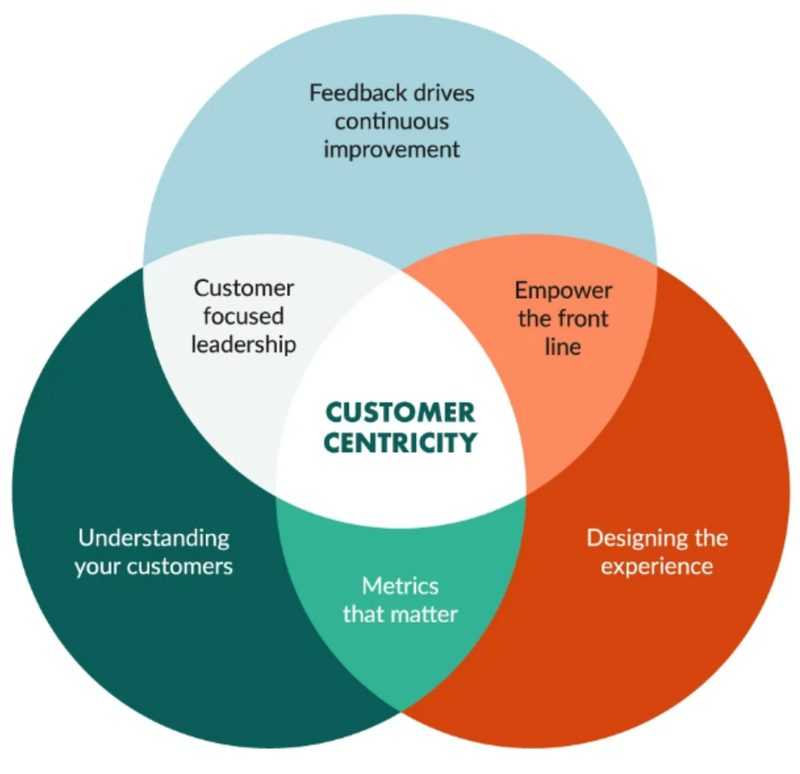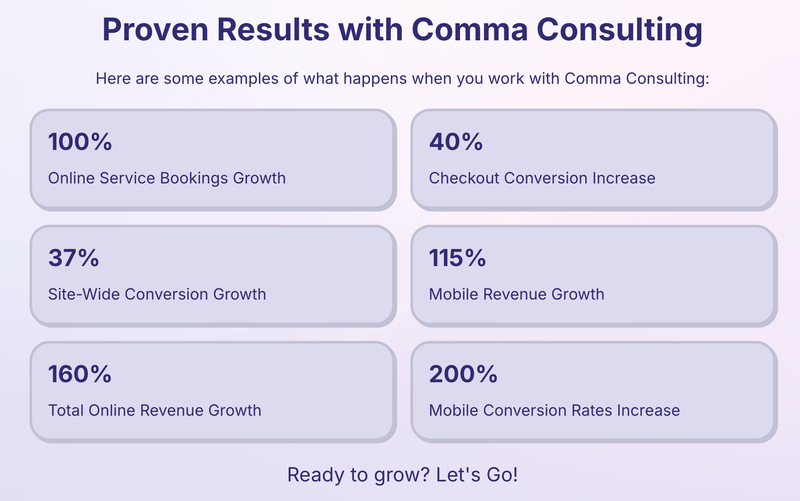
Is this you?
You sit in a company meeting where your CEO says,
“We are a Customer Centric Organisation”
And then….
Do you enforce policies or ways of working that frustrate your existing customers and potential new customers who have never purchased from you before?
Do not fret; you are not alone.

This common predicament stimulates three questions…
- Why is it so hard for businesses to be customer-centric?
- Why do these businesses have such poor-performing online channels?*
- What are the first set of baby steps an organisation can take to start the customer-centric journey?
*Research proves there is a correlation between customer centricity and online channel success.
What does being Customer-Centric mean to a business?
Before going any further, let's define customer-centric for a business striving toward this state of being.
Customers are always beautifully, wonderfully dissatisfied, even when they report being happy and business is great. Even when they don’t yet know it, customers want something better, and your desire to delight customers will drive you to invent on their behalf.
Being customer-centric is putting the customer at the centre of everything you do. It means going beyond simply knowing what customers want and applying effort to understanding them and the context of their needs.
This produces two substantial benefits:
- It provides endless ideas and inspiration to innovate, introducing new ideas and a direction the business would never have considered previously.
- A business is perceived as being relevant and offering value by anticipating customers' needs.

Why is it so hard for businesses to be customer-centric?
Customer-centric organisation emits the following behaviours…
- Puts the customer’s needs and wants first.
- Empower frontline employees to resolve customer pain.
- The business listens to what upsets customers and uses this information as a guide for change.
That doesn’t sound so hard, does it? And yet, it is hard.
What creates this contradiction between what a business says ("we are customer-centric") and what the business does (actions/behaviours).
There will be hundreds of reasons, but all can be summarised in one single statement….
Organisations are designed to protect themselves
From the perspective of business leaders, a business exists to make money, which ensures its survival. This impetus to survive naturally forces leaders to create an array of what I call safety measures.
These safety measures block or impede the ability to become customer-centric.
There are 3 safety measures…
- The behaviours/actions of people in power within the business
- Systemic behaviours (behaviours of the technical systems)
- Business rules defining how the business interacts with customers (these stem from people in power and the technical systems)
Visualise a castle and a moat. The business is the “Castle” and the “Moat” are the safety measures.

Safety Measure #1 - Business Leaders
It becomes ingrained in upper and middle management to protect the organisation and their own jobs. These are people who are NOT on the frontline.
The closest relationship in the C-Suite is between the CEO and CFO. The CEO wants constant feedback on the business's financial health. This continuous CFO-driven health status influences a CEO’s decision-making and method of managing other management layers.
This produces a "Protect Me" culture trickling down the business.
Safety Measure #2 - Technology emulates the “Protect Me” Culture
Technology is designed by the people who are trying to protect the organisation: the CFO drives the conduct of the ERP, and the COO defines the conduct of workflow systems (such as Order Management Systems). The role of the COO is to streamline/scale the business and reduce operating costs.
This weakness of passing on the “protect me” culture to systems strengthens and thickens the size of the moat.
Once in place, these technologies automatically enforce safety measures.
Negative Impacts to the Business eCommerce Channel:
Safety measures form the origin story behind how and why online experiences are to a low standard.
The online channel is driven by technologies designed to interact with humans. Delivering the "human side” requires immense support from senior teams and existing technologies.
The interaction between eCommerce technology and other systems creates a clash of ideologies: "protect me" vs. "customer-centricity."
Understanding this dynamic helps explain why so many eCommerce channels do not realise their full potential.
The eCommerce channel ultimately becomes the extension of an organisation that is not customer-centric.
Ever wonder why your eCommerce channel converts at under 1.5%?
Now you know.

Becoming Customer Centric – Baby Steps:
How can an organisation take baby steps in the right customer-centric direction?

The above graphic is a simple yet powerful illustration of how businesses can start their journey to being more customer-centric.
#1. Exec Team “Listens”:
Changing a culture to become more customer-centric must start from the top down. The Executive team must agree to listen to the customer and allow the “customer voice” to influence decision-making.
#2. Listening defines change:
From listening comes clarity around what the priorities look like for business change. As long as the investment is applied to customer-centric data, change will always produce positive impacts on business performance.
#3. Empower the frontline:
Provide frontline employees with the power and control to fix issues between people and the business. It's fine for a business to provide parameters for "issue-fixing," but these parameters must be set so frontline staff can fix many of the issues.
There is no point in empowering the frontline for issues that arise 5% of the time.
#4. Monitor/Measure:
There are three types of data capture needed...
- Data representing the customer's voice. This is the stimulant to drive the right change.
- Data capturing all the activities of the frontline staff fixed an issue. Another stimulant for change.
- Data showing the impacts of the customer-centric changes. This shows the business the positive impacts of being customer-centric.
#5. Communicate the results:
When the business benefits from being customer-centric, this proof must be screamed from the rooftops. This reinforces the change and stifles the "protect me" culture.
Conclusion:
You can't fake being customer-centric.
People are smart, they know. So save your breath, roll up your sleeves, and take some baby steps.
Benefits of working with an eCommerce Expert = Results:
When you work with an eCommerce Expert like Greg from Comma Consulting, these are the types of results you can expect...

Ready to grow? Let's Go! Click here to contact Comma Consulting now.
This article was as tagged as AI eCommerce , Customer Service , eCommerce Consulting , eCommerce Conversion Rate Optimisation , UX Design